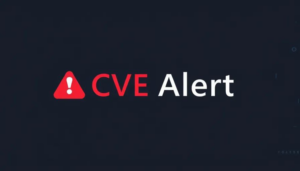CVE Alert: CVE-2025-49704 – Microsoft – Microsoft SharePoint Enterprise Server 2016
CVE-2025-49704
Improper control of generation of code (‘code injection’) in Microsoft Office SharePoint allows an authorized attacker to execute code over a network.
AI Summary Analysis
**Risk verdict**: Critical risk with active exploitation; treat as Priority 1 and remediate immediately.
**Why this matters**: An attacker can remotely execute arbitrary code on vulnerable on‑premises servers with no user interaction, potentially taking full control and persisting inside the environment. The impact includes data compromise, service disruption, and lateral movement into adjacent assets via trusted pathways.
**Most likely attack path**: Exploitation requires network access to the web front‑end, with only low privileges needed. Initial access could occur through internet‑facing endpoints or VPN access; once compromised, the attacker can execute code on the server, establish persistence, and move laterally to other systems through trust relationships or shared services.
**Who is most exposed**: Organisations running on‑premises deployments that expose web endpoints to the internet or to broad corporate networks are highest risk, particularly where network segmentation and access controls are weak.
Detection ideas
- Anomalous process creation on web front‑end/application pool processes.
- Unusual code‑injection patterns or unexpected child processes in web app services.
- Sudden spikes in outbound traffic or data transfers from the server.
- New services, scheduled tasks, or web‑config/file changes indicative of persistence.
- Unauthorised access attempts to admin or management endpoints.
Mitigation and prioritisation
- Patch the affected versions immediately; treat as Priority 1; validate in a test env before wide rollout.
- If patching cannot be applied quickly, harden exposure: restrict inbound access to approved IPs, enable WAF rules, and tighten network segmentation.
- Enforce strong admin authentication, enable EDR on the server, and monitor for persistence or lateral‑movement indicators.
- Confirm backups and run disaster‑recovery tests; coordinate with SOC and change‑management for a rapid remediation window.
A considerable amount of time and effort goes into maintaining this website, creating backend automation and creating new features and content for you to make actionable intelligence decisions. Everyone that supports the site helps enable new functionality.
If you like the site, please support us on “Patreon” or “Buy Me A Coffee” using the buttons below
To keep up to date follow us on the below channels.


